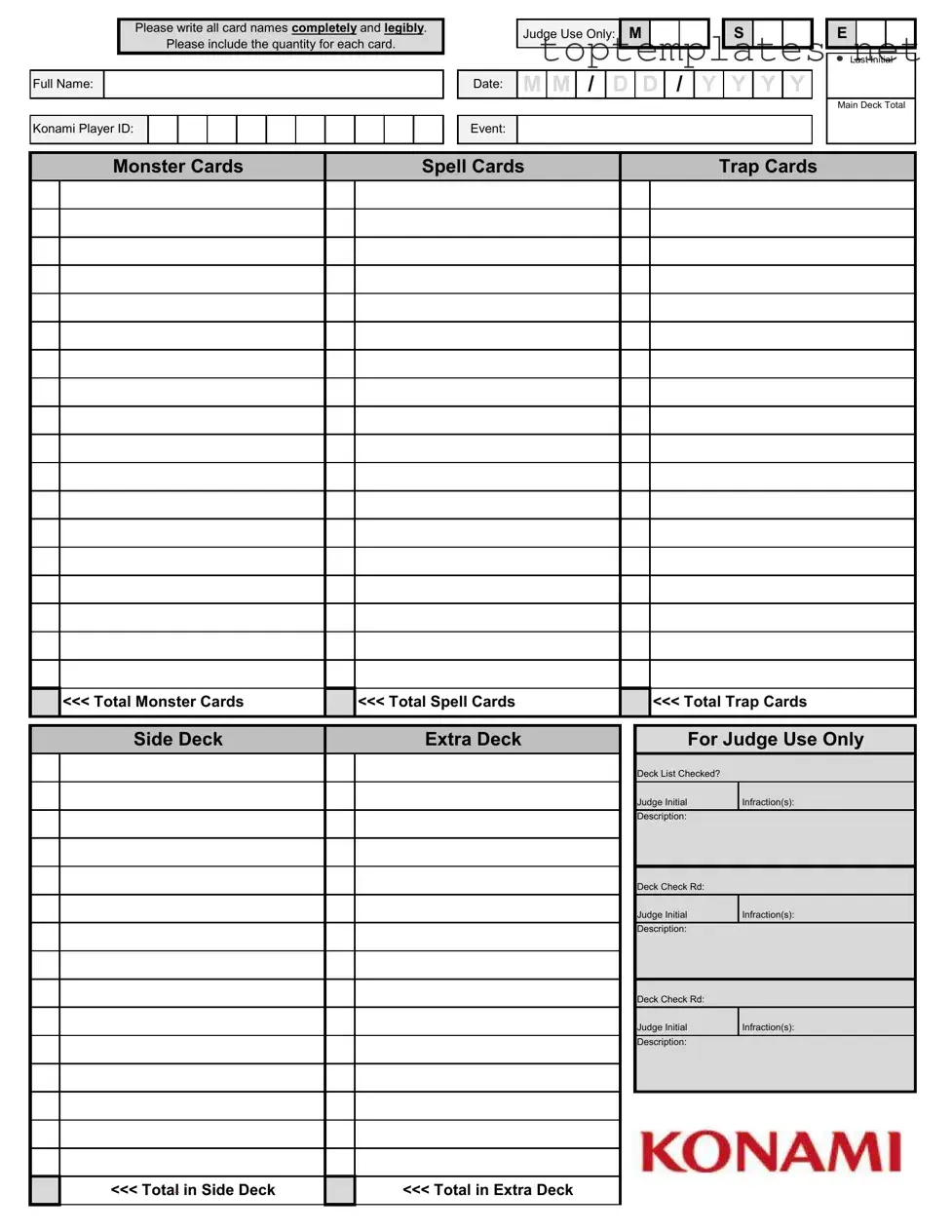What is the Konami Decklist form used for?
The Konami Decklist form is a document required for participants in official Konami events to list all the cards in their game deck. This includes the Main Deck, Side Deck, and Extra Deck. It ensures that players use a legal and registered deck throughout the event.
How should I complete the card names on the form?
Card names should be written completely and legibly. This means you should avoid abbreviations or nicknames for the cards. Writing the names clearly helps judges verify that your deck complies with event rules.
Is it necessary to include the quantity for each card in the deck?
Yes, next to each card name, you must include the quantity of that card in your deck. This information is crucial for judges when checking your deck list against the actual deck you are using in the tournament.
What information is required in the 'Full Name' and 'Konami Player ID' fields?
In the 'Full Name' field, you should write your complete legal name as registered for the event. The 'Konami Player ID' field is for your unique player identification number issued by Konami. If you do not have a Konami Player ID, it is recommended to obtain one before participating in official events.
What is the 'Judge Use Only' section?
The 'Judge Use Only' section is reserved for event judges. It includes spaces for the judges to mark if the deck list has been checked, note any infractions, and initial descriptions of deck checks. Participants should not write in this section.
How should I tally the total cards in each deck section?
At the end of each deck section (Main Deck, Side Deck, Extra Deck), there is a space to write the total number of cards in that section. Make sure these totals are accurate and match the actual number of cards in each part of your deck.
What happens if there are errors or inaccuracies in my deck list?
Errors or inaccuracies in your deck list can lead to penalties during the event. These might include game losses or even disqualification, depending on the severity of the discrepancies between your deck list and the actual deck you use in matches.
Can I change my deck list after submitting it?
Once your deck list is submitted, generally it is considered final and cannot be changed. It is important to review your deck list carefully before submitting to ensure it accurately reflects your deck. Any changes you wish to make typically must be done before the event's deck list submission deadline.




 <<< Total Monster Cards
<<< Total Monster Cards <<< Total Spell Cards
<<< Total Spell Cards <<< Total Trap Cards
<<< Total Trap Cards